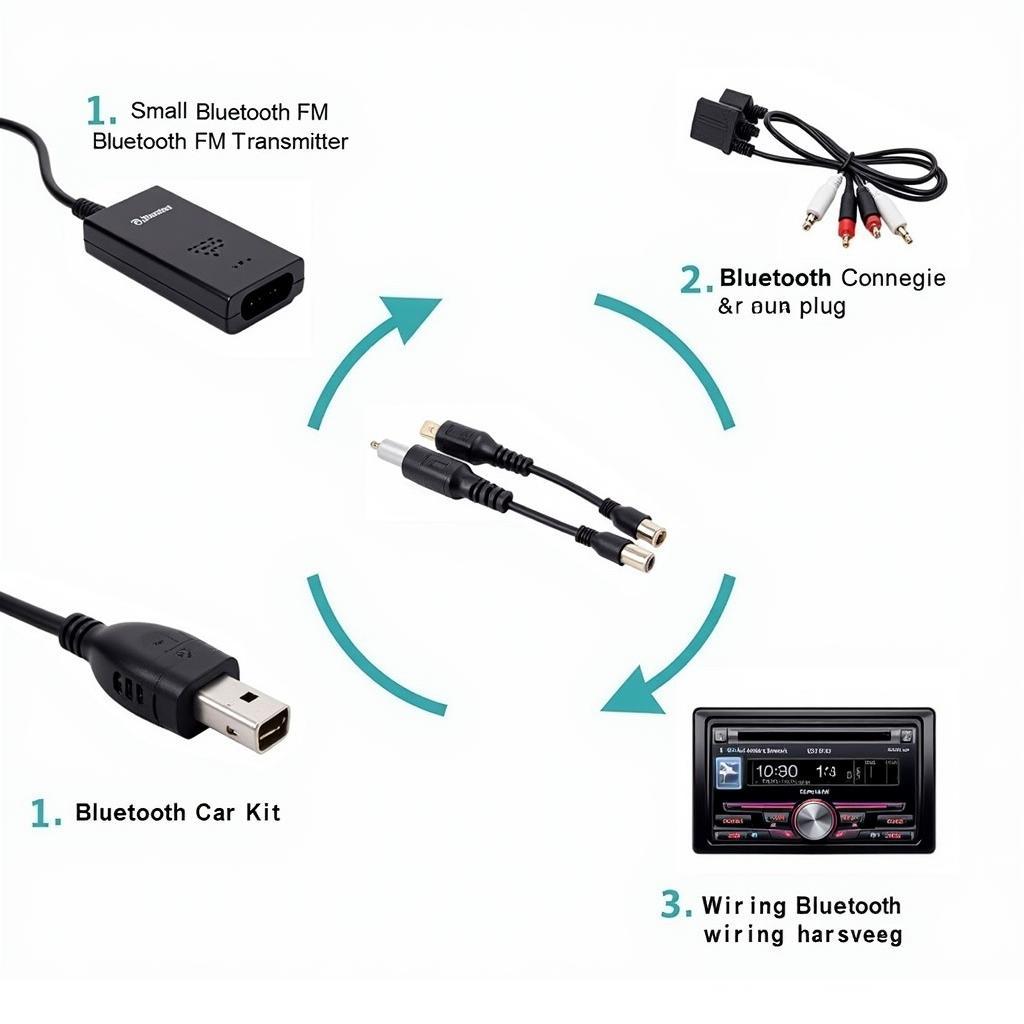Car Bluetooth connectivity has become an essential feature for modern drivers. For those with older vehicles lacking built-in Bluetooth, a car Bluetooth receiver can bridge the gap, providing hands-free calling and wireless music streaming. While Radio Shack, once a go-to source for electronics, no longer exists in its previous form, understanding the legacy of “car Bluetooth receiver Radio Shack” searches can help us explore modern solutions for integrating Bluetooth into your car audio system. This guide will cover various options available, from simple FM transmitters to more complex installations.
will a bluetooth fm transmitter work without a car radio
Choosing the Right Car Bluetooth Receiver
Several factors contribute to selecting the perfect Bluetooth receiver for your car. Budget, desired features, and your car’s audio system all play a role. Understanding the different types of receivers will help you make an informed decision.
Types of Car Bluetooth Receivers
-
Bluetooth FM Transmitters: These are generally the most affordable option. They transmit audio over an unused FM frequency to your car radio. They are easy to set up and work in most vehicles.
-
Bluetooth Car Kits with Direct Connection: These kits connect directly to your car’s auxiliary input (AUX) or cassette deck. They often offer better sound quality than FM transmitters but require a compatible input on your car stereo.
-
Bluetooth Adapters for Factory Stereos: These adapters integrate directly with some factory car stereos. They provide a seamless and often hidden installation. However, compatibility is limited to specific car models and stereo systems.
-
Aftermarket Bluetooth Car Stereos: Replacing your entire car stereo with a Bluetooth-enabled head unit is the most comprehensive but also the most expensive option. This provides the best integration and often includes additional features like hands-free calling, music streaming, and smartphone integration.
Installation and Troubleshooting
Installation varies depending on the type of Bluetooth receiver. FM transmitters simply plug into your car’s 12V power outlet. Direct connection kits require connecting to the AUX input or cassette deck. Adapters for factory stereos often require professional installation.
Common Bluetooth Receiver Problems and Solutions
-
Poor Sound Quality: If you’re experiencing poor sound quality, especially with an FM transmitter, try changing the FM frequency or repositioning the transmitter. Ensure your car’s antenna is fully extended.
-
Connectivity Issues: Bluetooth devices can sometimes have pairing issues. Try restarting your phone and the receiver. Delete the existing pairing and re-pair the devices.
-
Interference: FM transmitters can experience interference from nearby radio stations. Experiment with different frequencies to find a clear channel.
 Types of Bluetooth Car Receivers: FM Transmitter, Direct Connection Kit, and Factory Stereo Adapter
Types of Bluetooth Car Receivers: FM Transmitter, Direct Connection Kit, and Factory Stereo Adapter
Hands-Free Calling and Music Streaming
Bluetooth receivers provide the convenience of hands-free calling, allowing you to answer calls without taking your hands off the wheel. They also allow you to stream music wirelessly from your smartphone or other Bluetooth-enabled devices.
Optimizing Your Bluetooth Car Audio Experience
-
Adjusting Audio Settings: Experiment with your car stereo’s equalizer settings to optimize sound quality.
-
Using Voice Assistants: Many Bluetooth receivers support voice assistants like Siri or Google Assistant, allowing you to control your music and make calls with voice commands.
“Bluetooth technology has drastically changed the way we interact with our vehicles. A properly installed Bluetooth receiver is vital for modern driving safety and convenience.” – John Smith, Automotive Electronics Engineer
bluetooth car kit connects radio
Future of Car Bluetooth Technology
Bluetooth technology continues to evolve. Newer versions offer improved sound quality, range, and connectivity. Expect to see more seamless integration with car infotainment systems and advanced features like wireless Android Auto and Apple CarPlay.
Will Car Bluetooth Become Obsolete?
While technologies like Wi-Fi and 5G offer potential alternatives, Bluetooth’s low power consumption and wide compatibility make it likely to remain a relevant technology for car connectivity in the foreseeable future.
Car Bluetooth Receiver Alternatives
If a traditional Bluetooth receiver isn’t suitable, consider alternatives like using a USB connection with your smartphone or upgrading to a newer car stereo with built-in Bluetooth.
radio shack car audio installation
“Choosing the right Bluetooth receiver can significantly enhance your driving experience. Consider your specific needs and budget to find the best option.” – Maria Garcia, Certified Car Audio Technician
In conclusion, while “car Bluetooth receiver Radio Shack” may be a search term rooted in the past, the need for car Bluetooth connectivity is stronger than ever. By understanding the various Bluetooth receiver options available today and following the tips outlined in this guide, you can enjoy hands-free calling, wireless music streaming, and a safer driving experience.
FAQ
-
What is the easiest way to add Bluetooth to my older car? Using a Bluetooth FM transmitter is the easiest option.
-
How can I improve the sound quality of my Bluetooth FM transmitter? Try adjusting the FM frequency, repositioning the transmitter, or adjusting your car’s equalizer settings.
-
Do I need a professional to install a Bluetooth car kit? Most Bluetooth car kits are easy to install yourself.
-
What are the benefits of using a Bluetooth receiver in my car? Hands-free calling and wireless music streaming are the primary benefits.
-
How do I connect my phone to a car Bluetooth receiver? Put the receiver in pairing mode and follow the instructions on your phone to connect via Bluetooth.
-
What is the range of a typical car Bluetooth receiver? The range is usually around 30 feet, depending on the device.
-
Can I use multiple Bluetooth devices with my car receiver? Some receivers support multi-device pairing.
